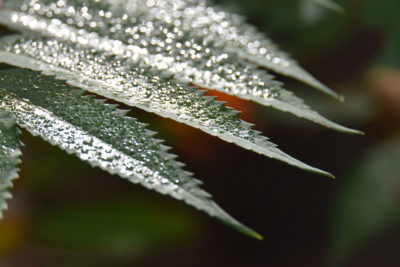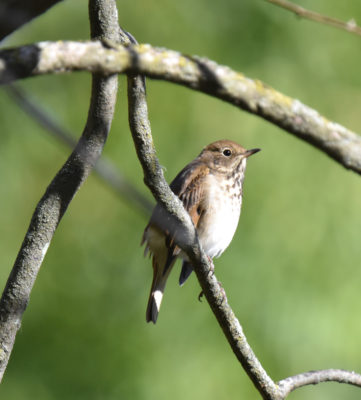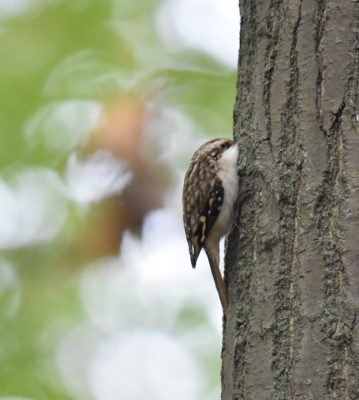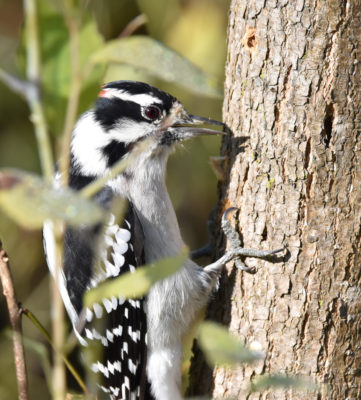Now, in October 2016, the ash-tree removal and sapling-shrub-and-tree planting programs at the Rattray are almost complete. It’s much calmer down here than it has been for the last two years! It’s possible to walk around the full loop from the Old Poplar Row spur path to Jack Darling and back without any closures. Aside from the unpleasant whine of leafblowers on the surrounding residential properties it’s reasonably quiet again. That makes enjoying the company of the last of the summer migrants and the cheerful year-round residents simpler. Here are a few of the feathered faces I met on my mid-October excursion.
Two Types of Kinglets Both Zipping Quickly Through the Canopy and Hovering Alongside the Goldenrod
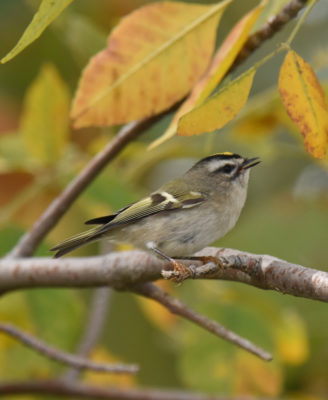
This Golden-crowned Kinglet has caught something with very long legs to eat.
As the warbler migration winds up for the fall, the Kinglet migration continues. On recent trips I’ve seen both Ruby- and Golden-crowned Kinglets. They are truly tiny and always on the move–it’s very hard to capture their character and appeal in a still photo.
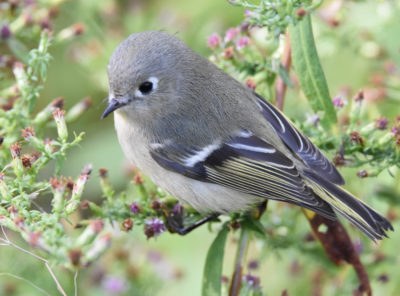
This Ruby-crowned Kinglet posed attractively amidst the asters and goldenrods.
You can tell the two Kinglets apart fairly easily if you can see their faces. Golden-crowned have almost angry-looking white and black eyelines. Ruby-crowned have a partial white eye ring.
Riverbank Grapes and Virginia Creepers Share Their Bounty
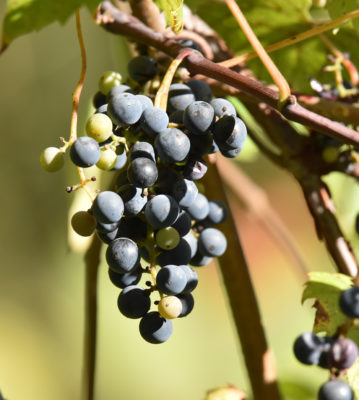
The Riverbank Grape crop is large this year and many birds were taking advantage of the leaf cover to perch in some shelter while snacking.
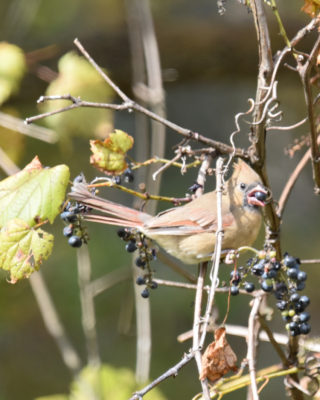
This female Northern Cardinal was popping grapes like a pro.
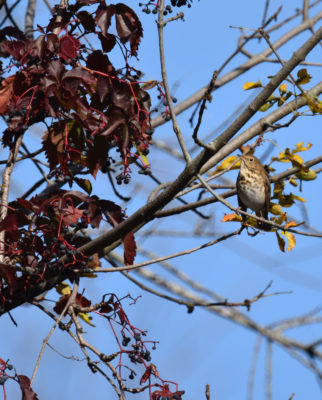
At least three Hermit Thrushes were in the Creeper.
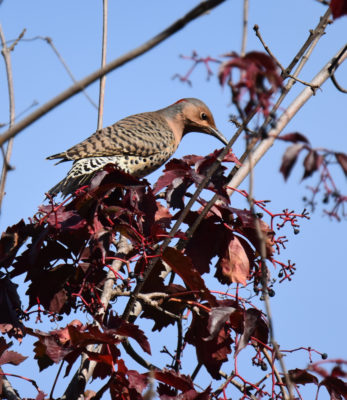
A Northern Flicker ate Creeper fruit for about five minutes, too.
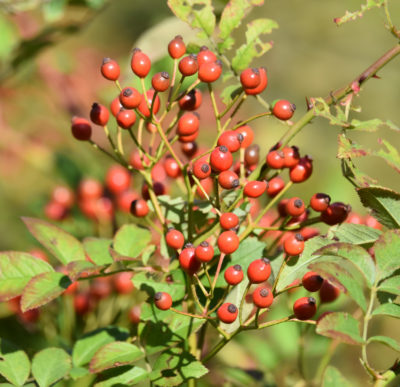 |
|
The softer fruits must be more appealing than the Multiflora Rose hips although by spring most of them will be gone, too.
A Few Water Birds Floated By
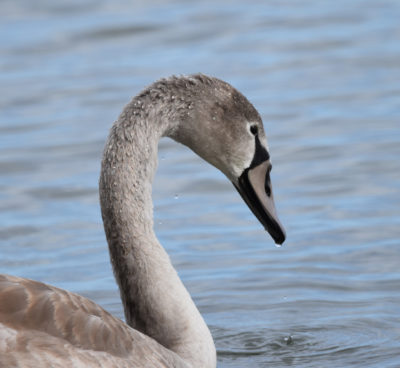
Two pairs of Mute Swans were seen incubating eggs this spring in the Rattray. Although one nest flooded, they re-built and went on to have cygnets. Recently, there has been a pair of Mute Swans with three dusky youngsters and a single Mute Swan with two grey adolescents moving around the marsh. I’m not sure if the fourth parent is still around or not.
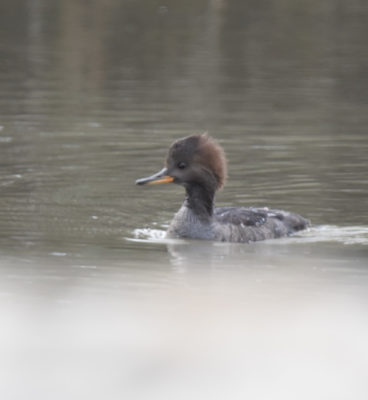
Three Hooded Mergansers have also been hanging out in the Lagoon. No adult male has been seen recently, though.
Sparrows Skulk Everywhere in Autumn
This White-Throated Sparrow was taking advantage of a sunlit spot on the board walk to bask for a minute or two.
It was still quite a cool day and in shadowy spots the heavy silver dew was still lingering.
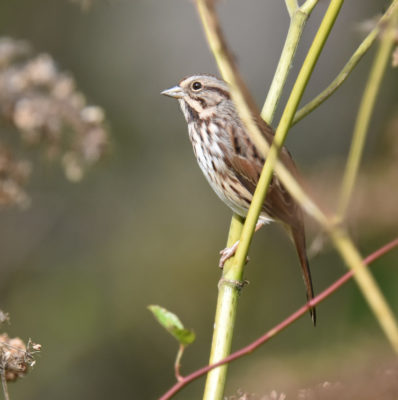
This sparrow preferred to perch under the canopy of Cow Parsnip seed heads.
Late Migrants Add Variety
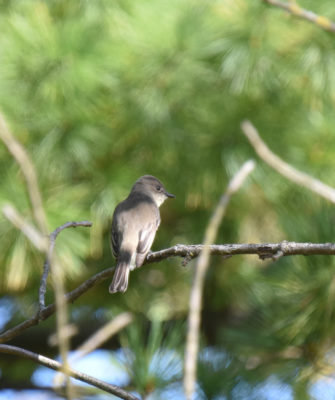
There were several Phoebes enjoying the mosquitoes, gnats and other insects still flying in the unusually warm weather.
Some of the Thrushes appeared quite young and may have only fledged recently.
Songbirds Aren’t the Only Migrants Though
I was enjoying watching a small flock of migrants including two Brown Creepers while I toured along the Knoll trail.
Some of the resident woodpeckers were also busily at work.
Then a larger bird flew in to perch and everyone froze.
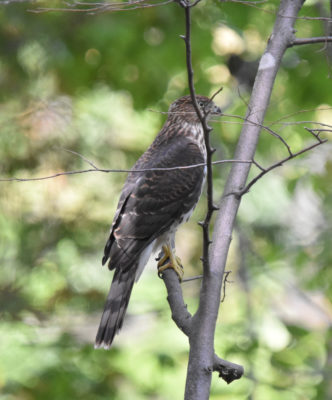
At first I wasn’t sure if this was a young Merlin or Sharp-Shinned Hawk. A check on the internet, though, advised me that Merlins always have dark-coloured eyes. These yellow eyes help to identify the bird as a young Sharp-Shinned. (It could have been a young Cooper’s but it was quite small so I’m pretty sure it was a Sharp-Shinned.)
The smaller birds nearby didn’t care what its name was: they just didn’t want to be eaten. All the singing stopped and the birds stayed still until the hawk moved on further around the edge of the marsh.
Overall, it was a splendid day to explore the Rattray!
Related Reading
Join In
Do you have a favourite trail to walk while searching for fall migrants? Please share your views with a comment.


